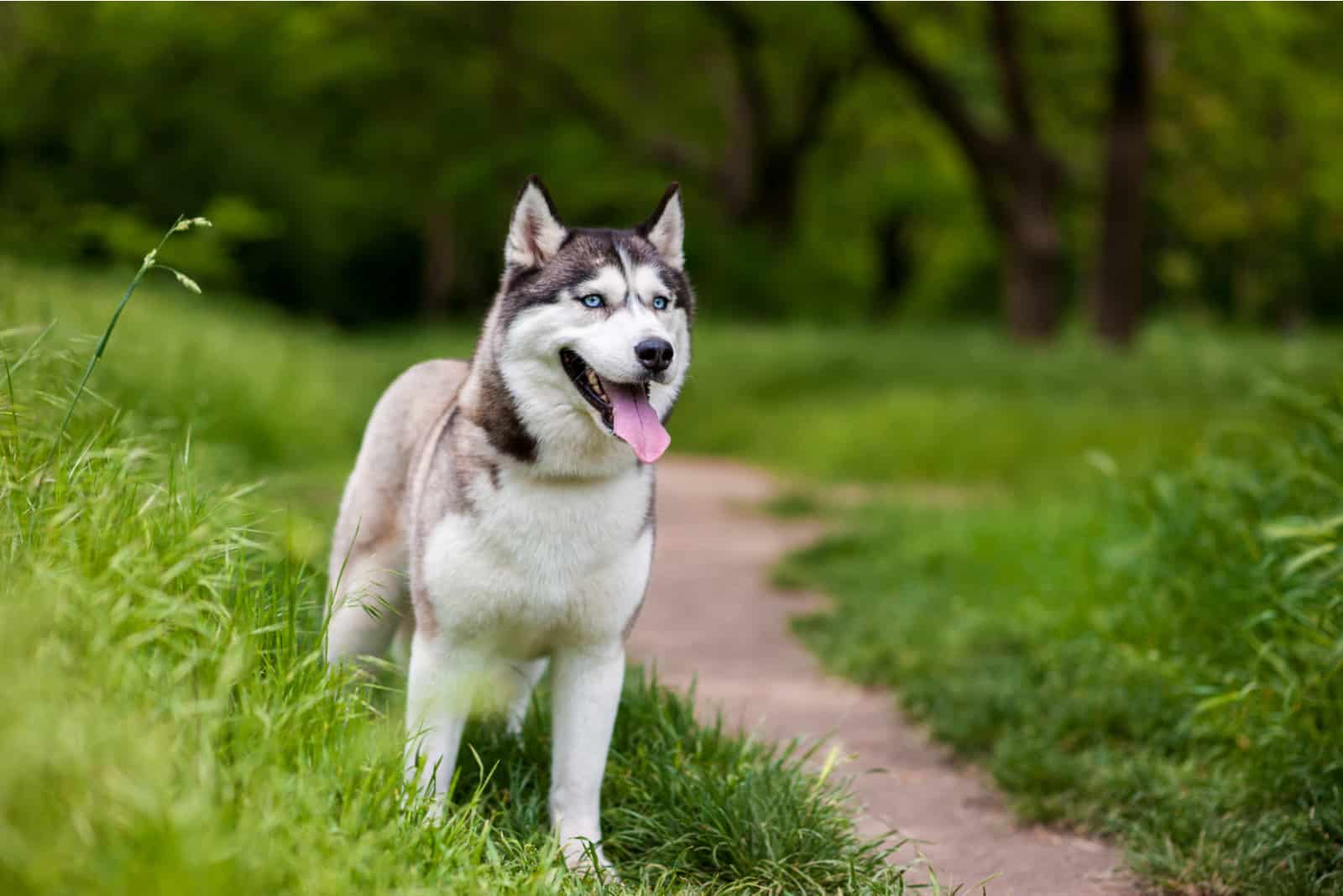The Siberian Husky dog breed is truly one of the most amazing dog breeds in the world. I’m not surprised by their popularity in the States, and around the world. Ever since the talking Husky, Mischka, won the Internet with her howling, people have been trying to get a piece of this dog breed.
But, which of these gorgeous coat color options do you choose? Husky colors are a deep pool of possibilities. Each color is more beautiful than the other. If I were you, I’d have so many problems with choosing the ideal Husky for my family. Yup, family, because Huskies are family dogs. They’re sweet, kind, and sometimes called nanny dogs.
There are numerous reasons why a Husky is your ideal dog breed. But, to make you fall for them, you will need to take a look at the Husky colors chart and see which one carries the prettiest of all the coat colors!
About The Husky Dog Breed
One of the finest working dogs comes from the great Siberia, a vastness chained in snow and ice. The Siberian Husky is a wolf-like dog that has become a favorite of many families. They may seem to be dangerous, but they’re far from that.
The Husky breed was first found with the Chukchi tribe from Siberia. In fact, Huskies are considered to be some of the oldest canine species.
While many dog breeds arrived in the states a long time ago, the Siberian Husky came at the beginning of the 20th century, precisely in 1908. The first pups of this breed came to Alaska. It was a promised land for a dog that adores snow so much.
The dog lovers of Alaska seized the opportunity and created new, cousin-breeds linked to Huskies, the Alaskan Husky (a combo of the Alaskan Malamute).
Huskies got to do what they were made for in Alaska. They were used as sled dogs, protectors, and life savers during harsh weather. Their wooly coat sure can make a person feel warm again!
Huskies are medium to large dogs, built to be fit and athletic. According to their breed standard, males of this breed can grow from 21 to 23.5 inches at the withers, while females are only an inch or two shorter. Naturally, males weigh more, with 45 to 60 pounds, while their counterparts are 35 to 50 pounds.
This dog breed is characterized by a lovely, friendly temperament, and a bunch of energy stored for future mischiefs and zoomies around the house. What they need is a strong hand to guide them and be their pack leader. Otherwise, their tendency for destructive behavior might come up.
Siberian Husky Coat: Are They Big Shedders?
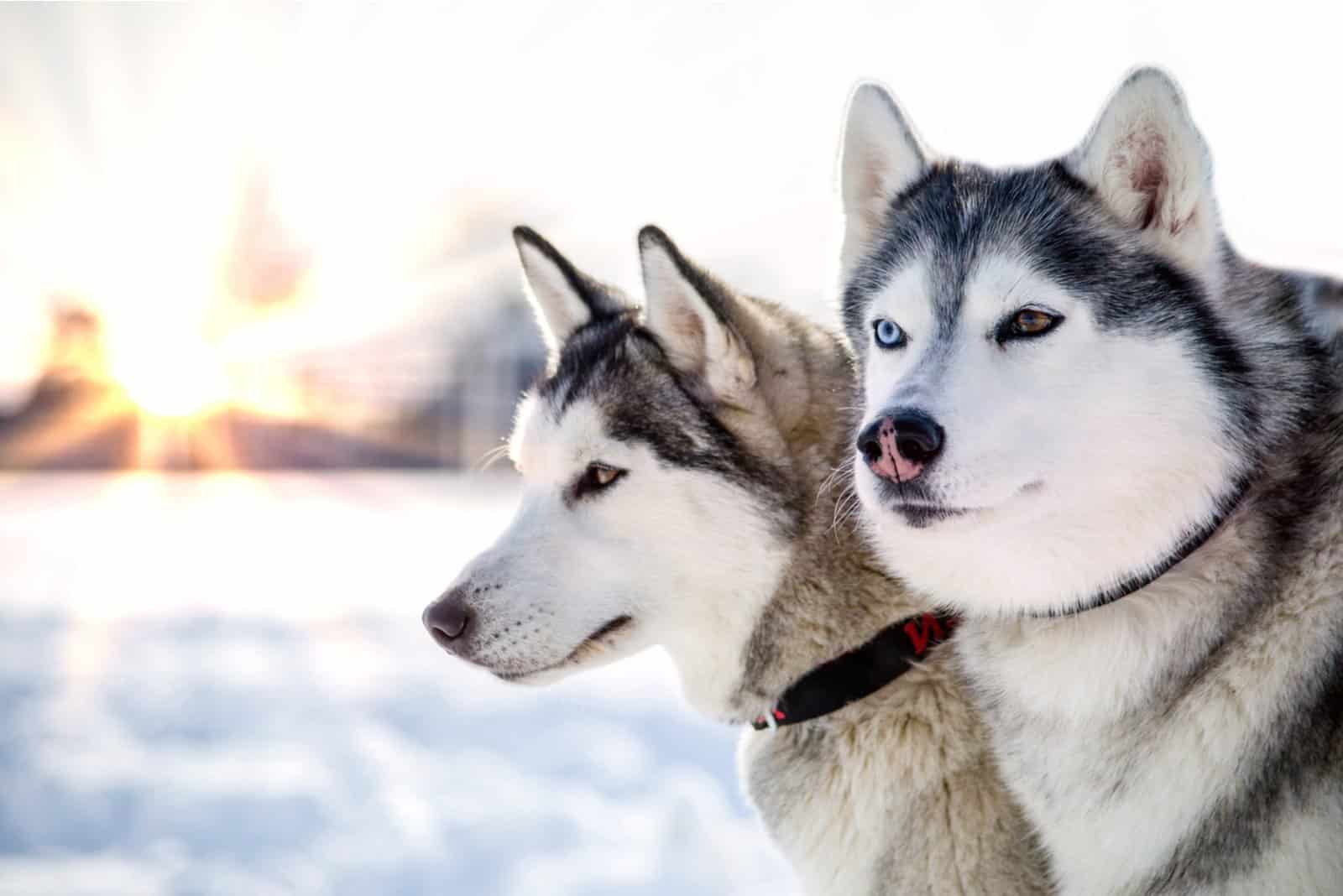
I have the perfect name for a Husky: Sir Shed-a-lot!
You don’t get it? Well, now you will.
Huskies shed massively, especially during spring and fall. These are dogs with a double coat. But, even though the hair is long, it’s still harsh to the touch. The outer coat is covered in long hairs, but the undercoat has a pleasant touch. It’s quite dense, and very soft.
Their medium-length coat will require brushing on a weekly basis, but more on that later in the article.
Husky Colors Chart
To help you out with understanding Husky colors, here’s a little chart of all of the possible solids and color combinations. If you’re interested in one particular coat color, scroll through the article and find something about it.
[table id=356 /]
Do Huskies Have Rare Coat Colors?
I know you’re used to hearing some dog breeds having extremely rare coat colors, which makes them even more desirable. Well, I have to let you know that’s not the case with this dog breed.
This dog breed doesn’t specify one coat color as rare. All of their colors are accepted, but they’re just a bit less standard than the others.
Gray And White Husky
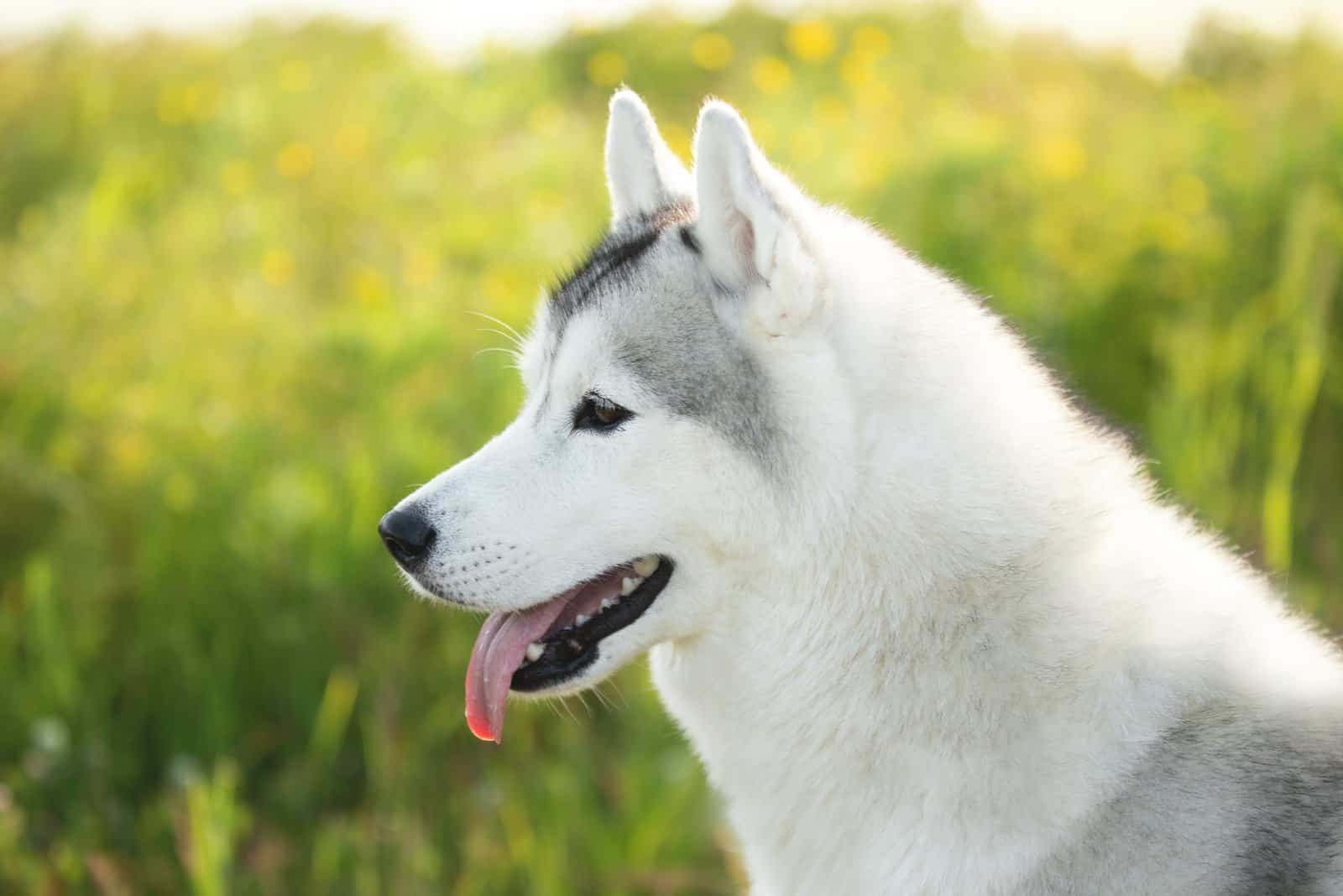
The gray and white Husky is a very common color option, and quite lovely in my opinion. I see many of these Huskies on the streets and they take away everyone’s breath. You’ve probably seen them around, but maybe you didn’t know how to classify them. You see, gray and white Huskies can come in three different shades of gray, from wolf gray over to silver and deep gray.
The wolf shade comes with tan, beige, or red colorations on the dog’s back, legs, and ears. Their cold, gray topcoat is enriched with a reddish tint, which makes a lovely contrast.
Silver gray Huskies are precisely what happens when you restrict the agouti gene. Actually, the top coat has a touch of silver or any other colder shade, like blue. If you compare wolf and silver, you’ll notice that wolf is warmer.
Lastly, deep gray Huskies are the most common of all three types of gray and white Huskies. Their topcoat is a deep shade of gray, of course, but their undercoat has warm hues, and it usually comes in silver or beige.
Red Husky Coat Color
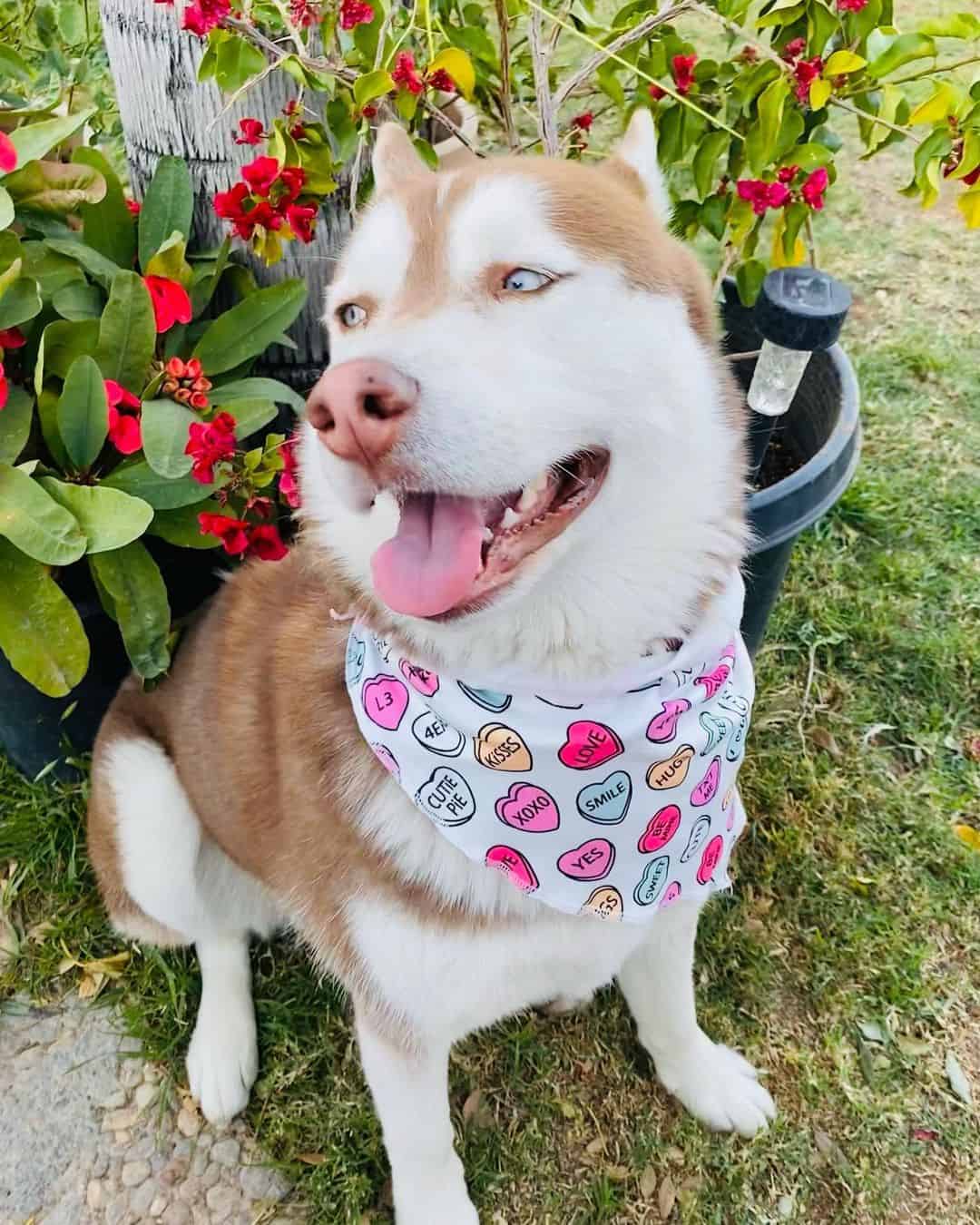
Photo from: @ruby.redhusky
The red (or the red and white Husky) comes in a variety of red shades, each more beautiful than the other.
The red shades range from deep red to copper and cream variations. If the red coat appears to be a bit rusty, we can classify such Huskies as chocolates or browns.
Red Huskies have no black hairs on their coat… not a single one. Their coloration is linked to liver genes. That’s why these dogs come with a liver nose, lips, and eye rims.
As you can imagine, red & white Huskies, no matter their shade, are very rare. They are recognized, but still hard to find.
White Siberian Husky Color
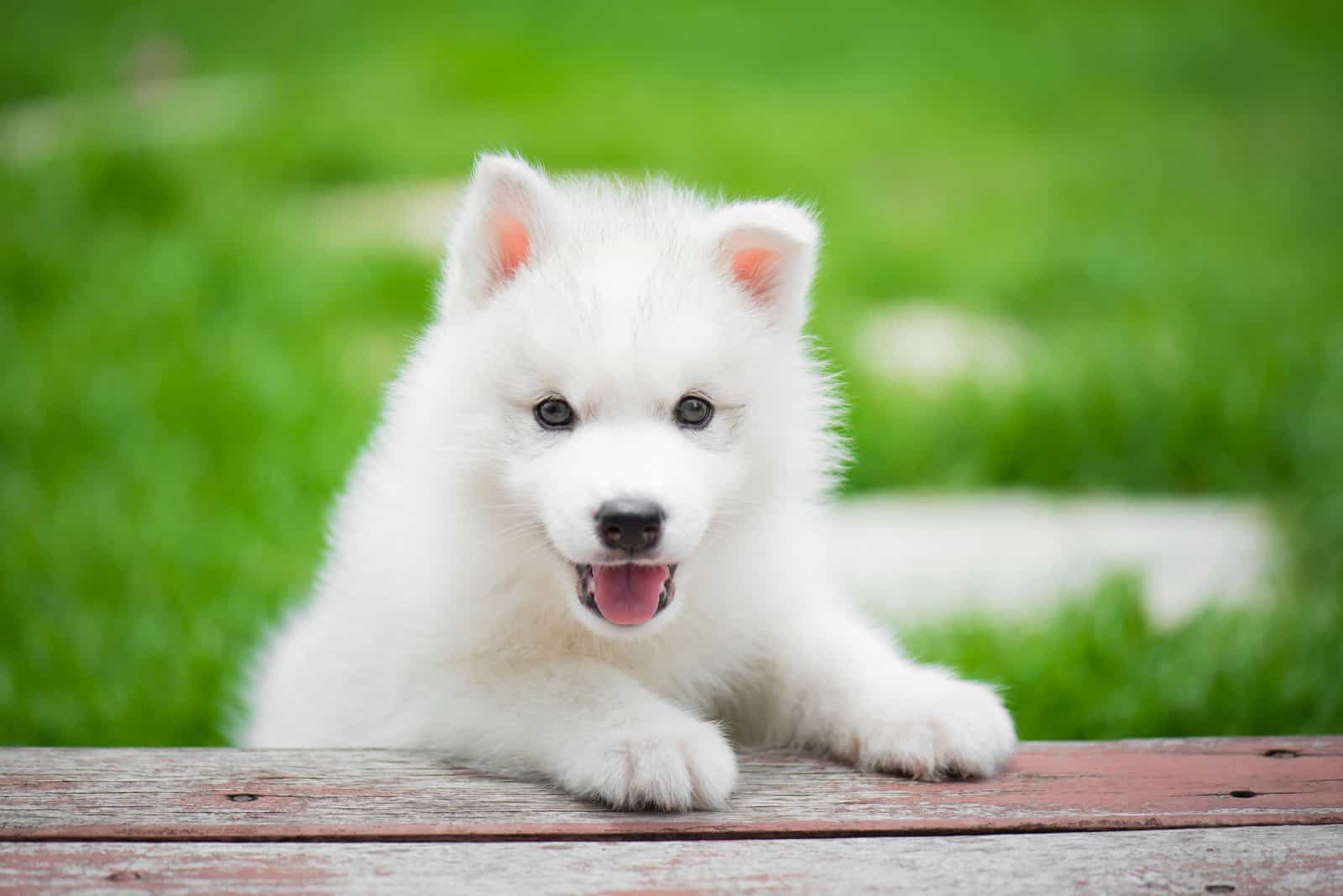
Unlike many other dog breeds, the Siberian Husky doesn’t come often in a pure white coat.
White Siberian Huskies are extremely rare since white isn’t a dominant gene. Dogs classified as white Huskies come with a white undercoat, white markings, and a light overcoat.
Black Siberian Husky Color
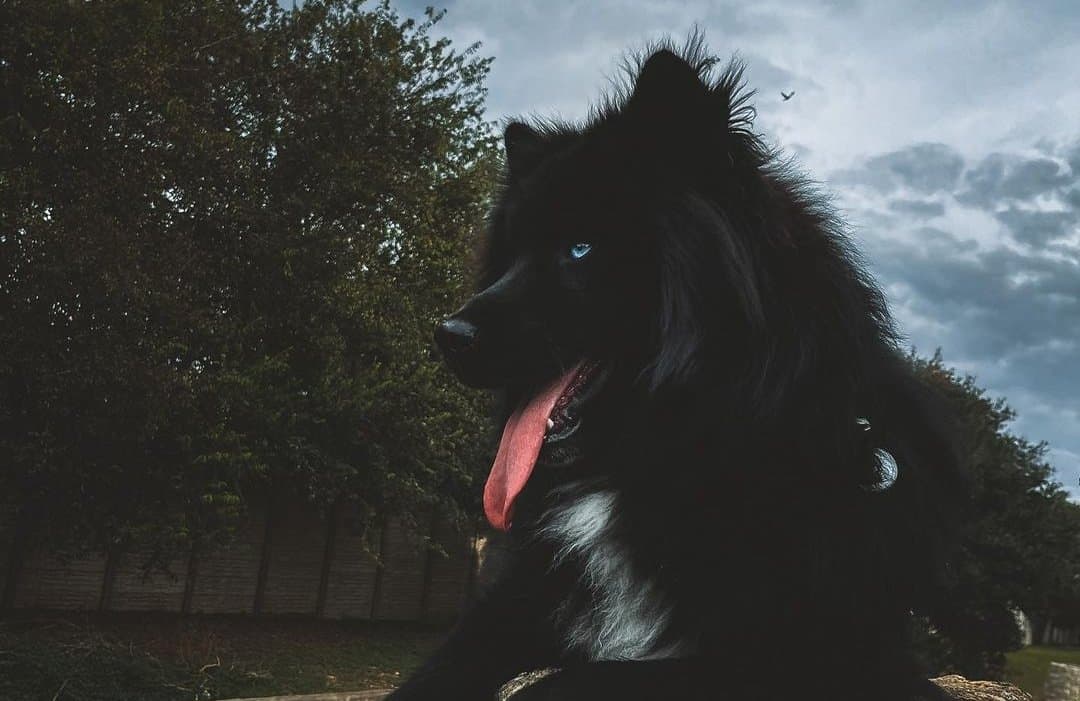
Photo from: @yin.yang.siberians
Black coats are actually quite common with Siberian Huskies, even though we don’t see many of them on the streets. The reason behind their prevalence is the fact that the black gene is dominant over the white gene; thus, it’s much easier to come up in a litter.
Black Siberian Huskies can come in three black shades (even though it may sound funny): rich black, jet black, and even diluted black. They’re all stunning, and to be honest, a bit intimidating. But, you shouldn’t worry about their aggressive side since black Huskies are as equally sweet and friendly as any other color.
Black & White Siberian Husky Color
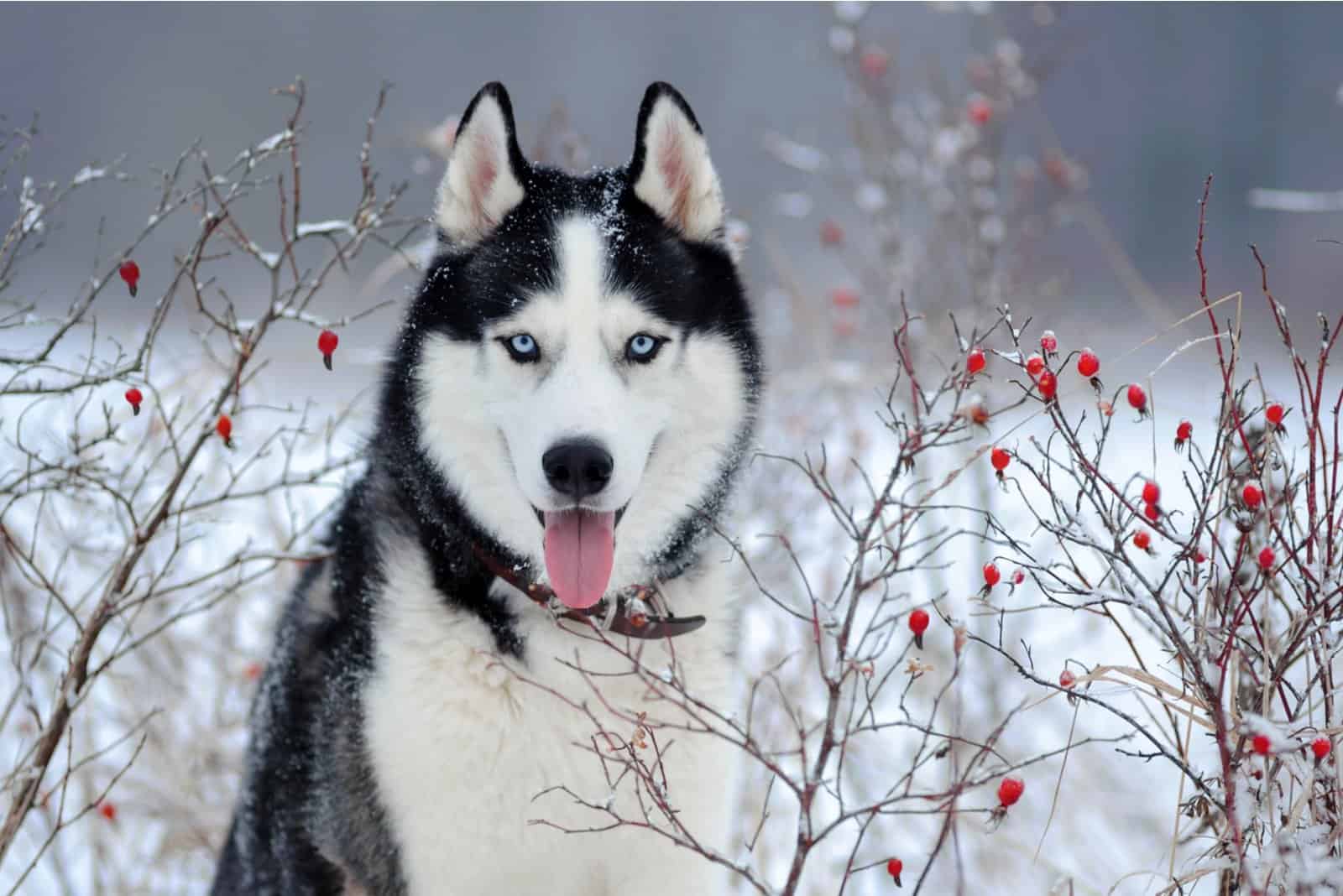
When someone tells you to picture a Husky, you probably imagine a black and white doggo. Well, no wonder! Black and white Huskies are quite standard with this dog breed.
Their undercoat can come in beige, white, or charcoal. Still, it’s considered a part of the black and white combination. The top coat, of course, comes in one of the three possible black shades. These dogs range from jet blacks to salt and pepper grays. That’s why some black and white Huskies appear to be “washed out”.
Sable Siberian Husky Colors
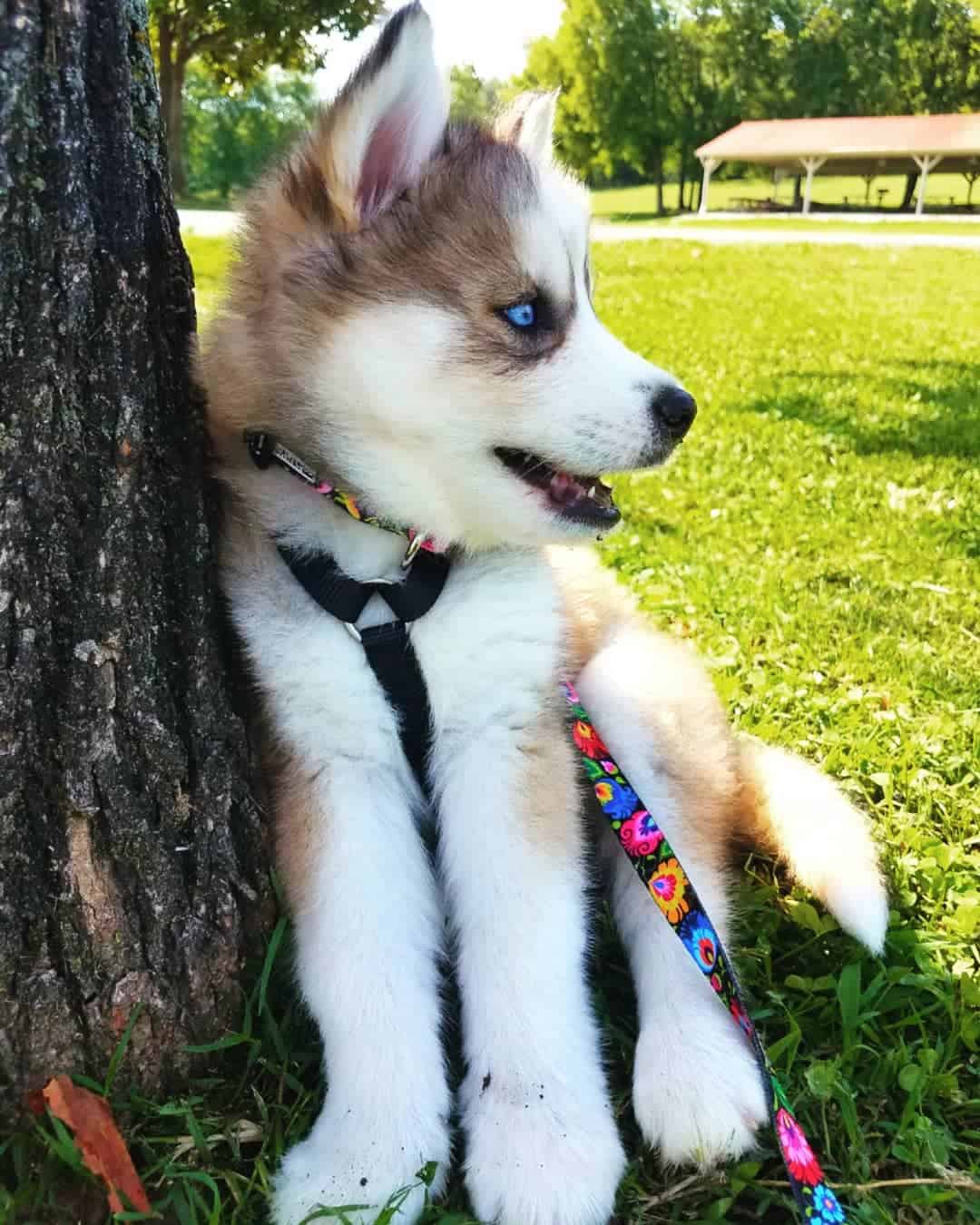
Photo from: @sableskyler
Sable Siberian Huskies can get mixed up with light red Huskies. While both are beautiful dogs, there are some differences that will help you distinguish these two.
A Sable Husky is partially white, but it’s guard hairs are brown/red at the roots. They come with black tips. The ears and the nose are also black.
Take a good look at these points and you’ll see that the Sable Husky is totally different from the Red Husky.
Agouti Siberian Husky
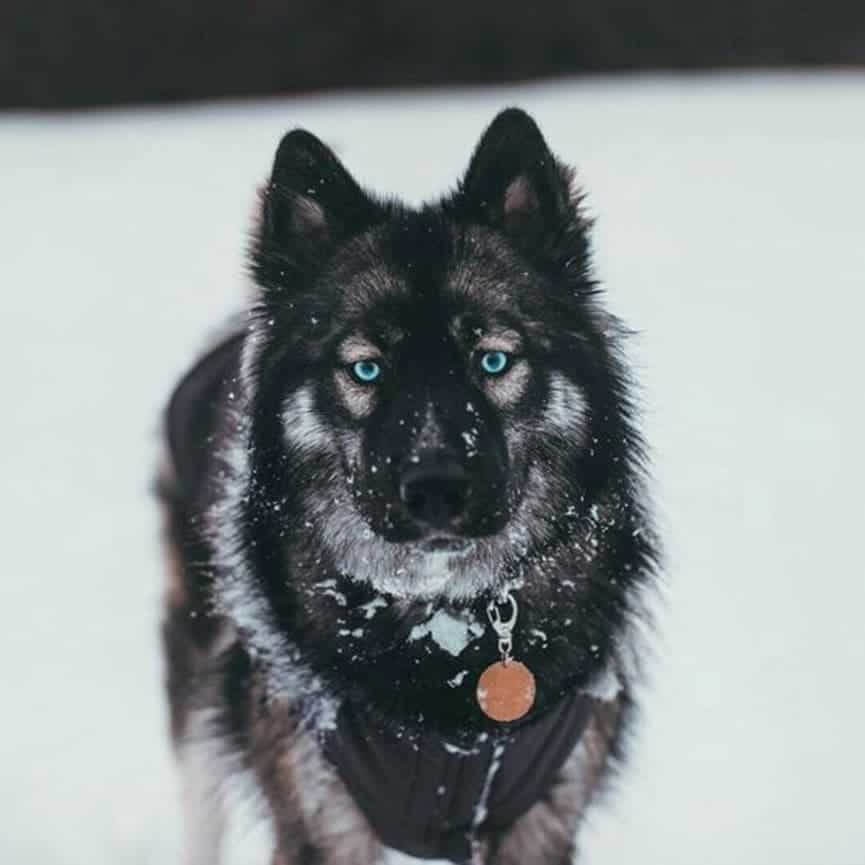
Photo from: @agoutihuskies
Agouti Huskies are often called wild Huskies. They have a coat color that the experts usually call “wolf gray”.
These Huskies fashion a dark undercoat, but their top coat is something unique in the canine world. It’s actually a combination of several colors, creating a one-of-a-kind pattern. The space between is lighter, which gives a dimension to the coat.
Read More: Top 5 Agouti Husky Breeders In U.S.
Merle Husky
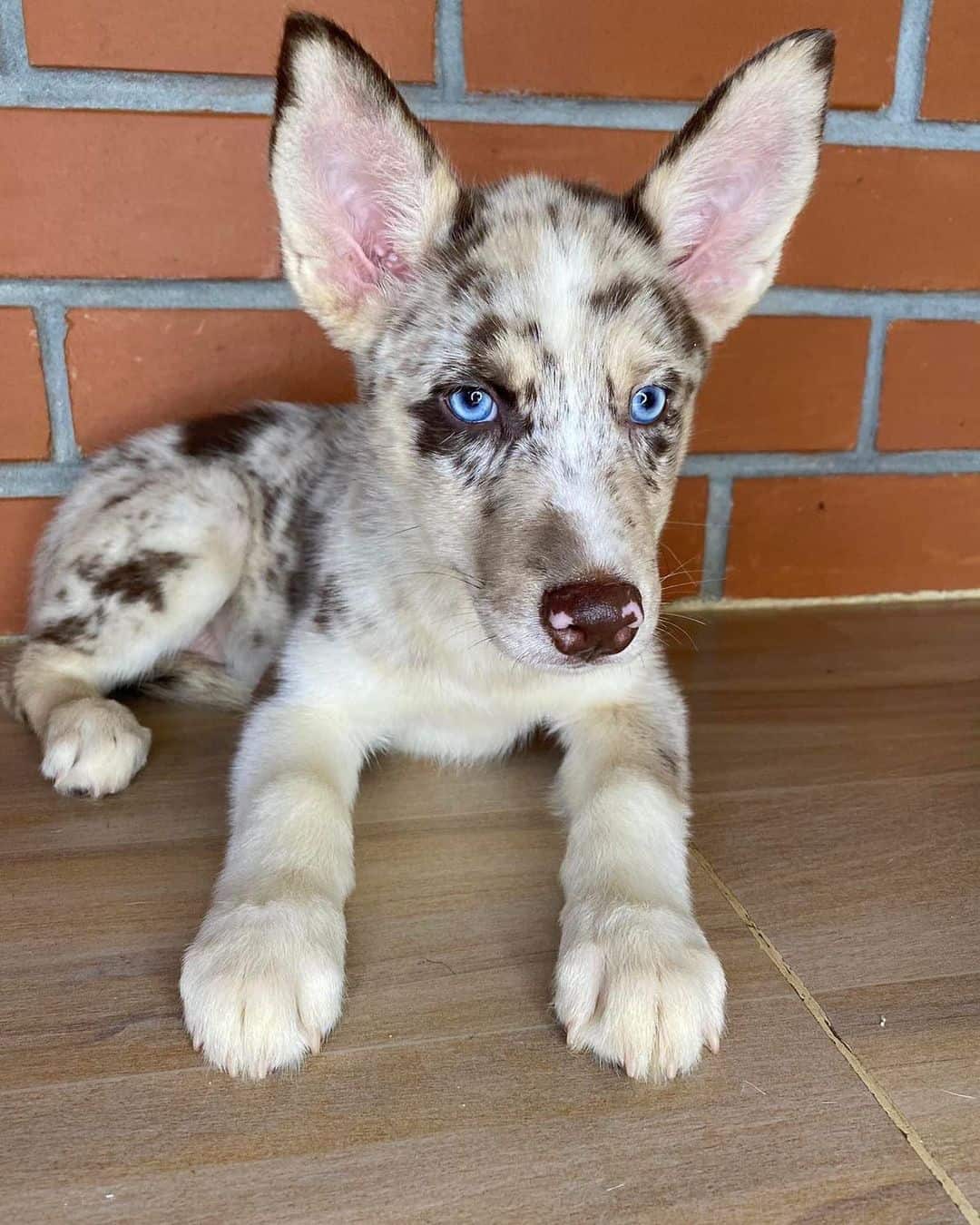
Photo from: @orionmerle
The merle coat pattern is one of the most recognizable ones in the canine world. But, rarely a common Joe knows the name of this special patterning. As the AKC and the SHCA (Siberian Husky Club of America) claim, the merle pattern is characterized by pigmentation that can come in the form of black spots or deep brown on a white base.
No matter how beautiful this coat color is, the facts are a hard pill to swallow: the merle gene brings many health issues along, especially a double merle gene. I love seeing these dogs, but I hate that they’re prone to numerous health problems.
White, Black, And Tan Husky
I know black and tan is common with most dog breeds, i.e., the German Shepherd, but that’s not the deal with Huskies. This tri-color combination is one of the most unusual of all Husky colors.
Still, I find them quite charming and a delight to look at.
Chocolate Husky
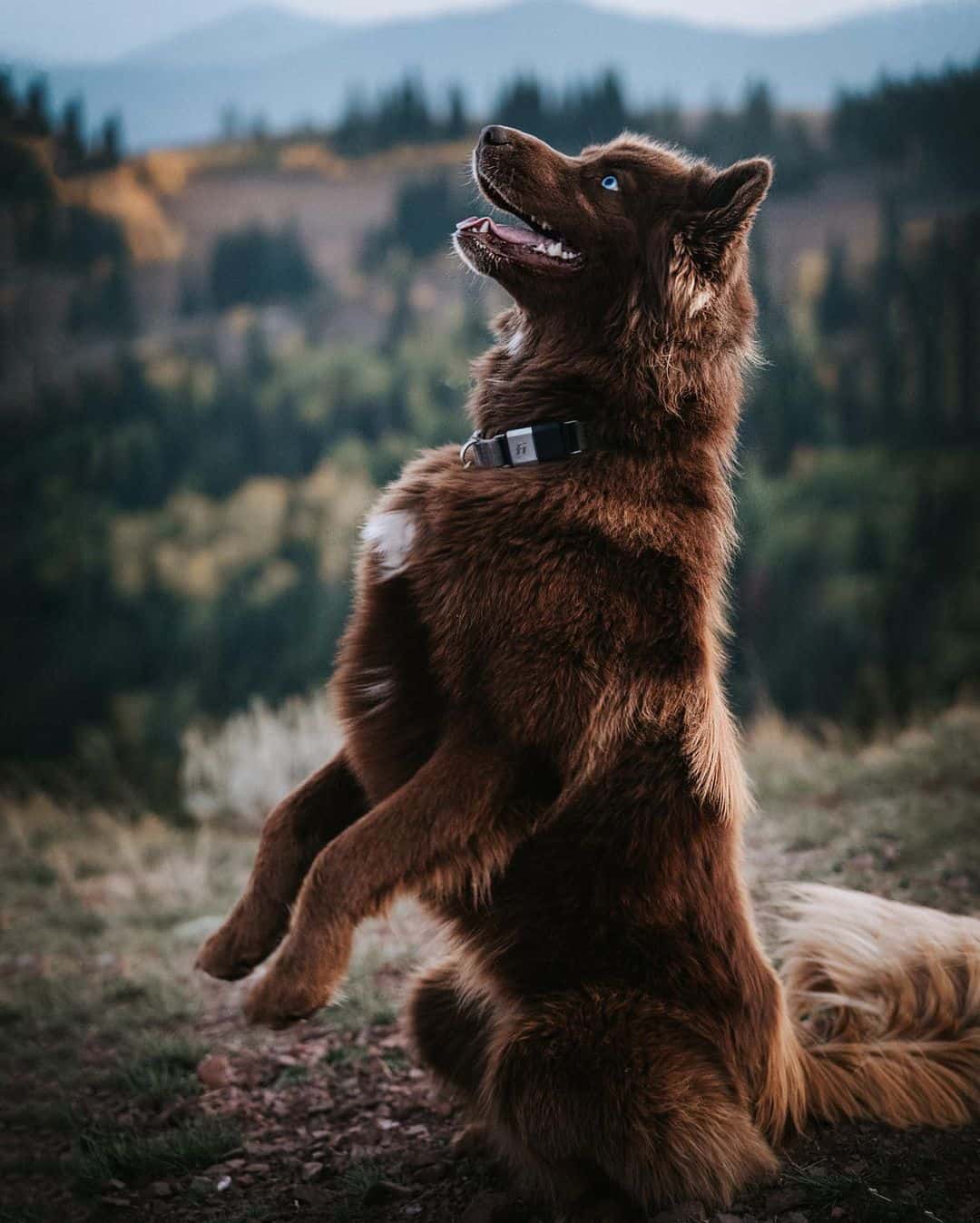
Photo from: @huskyquoi
Chocolate Huskies are as sweet as chocolate!
Seriously, this dog breed in such a lovely coat color is something you don’t see every day.
Chocolate Huskies come with a deep brown coat that is as rich as chocolate. Sometimes, this brown coat is refreshed with patches of white on the chest or around the neck. As you may assume, the Chocolate Husky features chocolate eyes! But, what you probably don’t know is that these Huskies are slightly larger than most other Huskies.
Piebald Or Pinto Huskies
I know they may look like black and white Husky puppies, but they really aren’t.
Piebald Huskies are puppies with black spots. These markings usually occur on their back and around their ears. Their black points are not that big, like with black and white Huskies. And, yes, they are considered rare.
Brown & White Husky
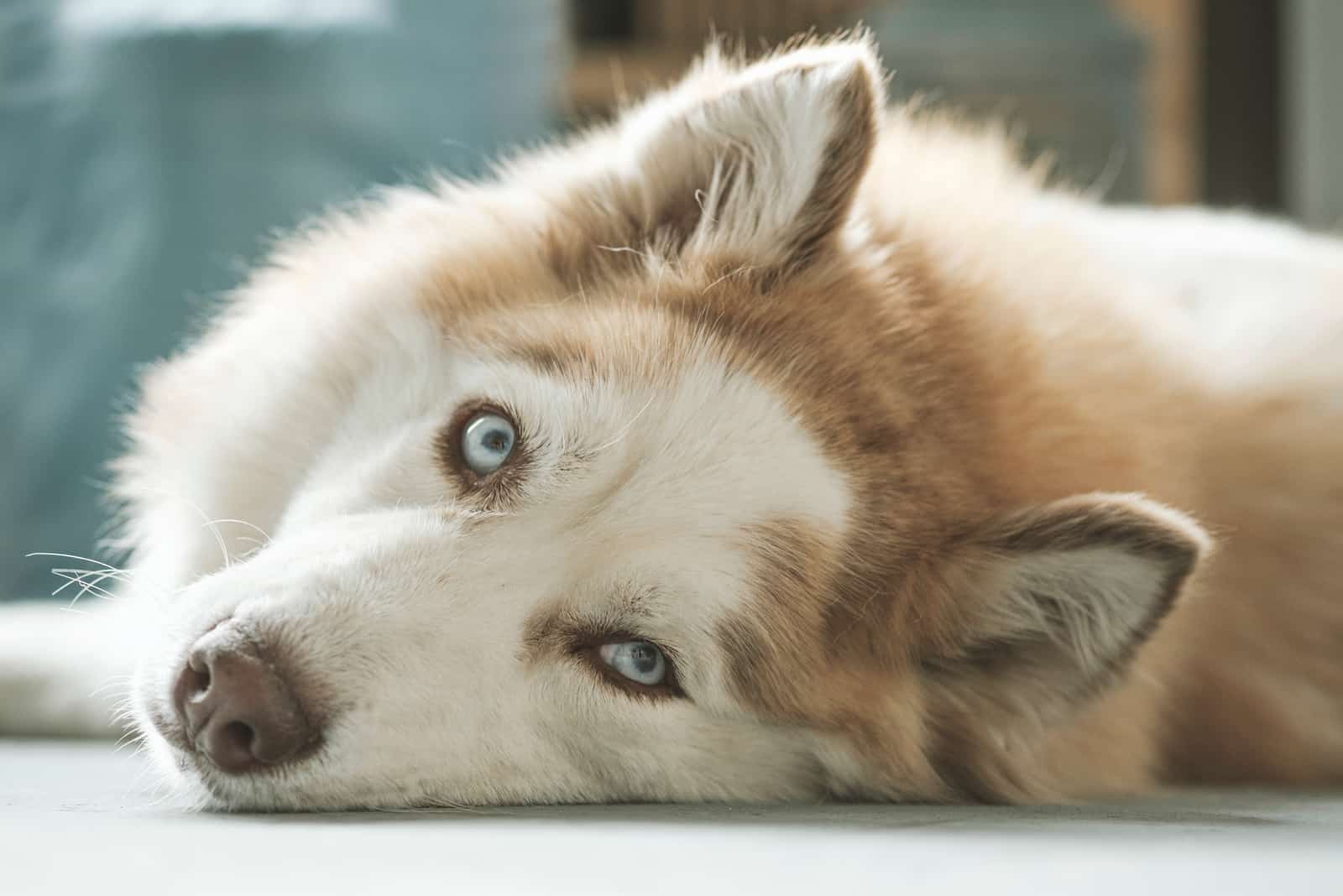
I know some of you might confuse them with dark red & white Huskies, but these aren’t the same. The brown and white Husky is another lovely coat color with special markings.
It’s rather easy to tell them apart from red Huskies. The brown and white ones have markings on their face. Also, these markings come with clear margins between them. The reason I love brown and white Huskies, other than their gorgeous blue eyes, is their deep brown hue.
Orange and White Husky
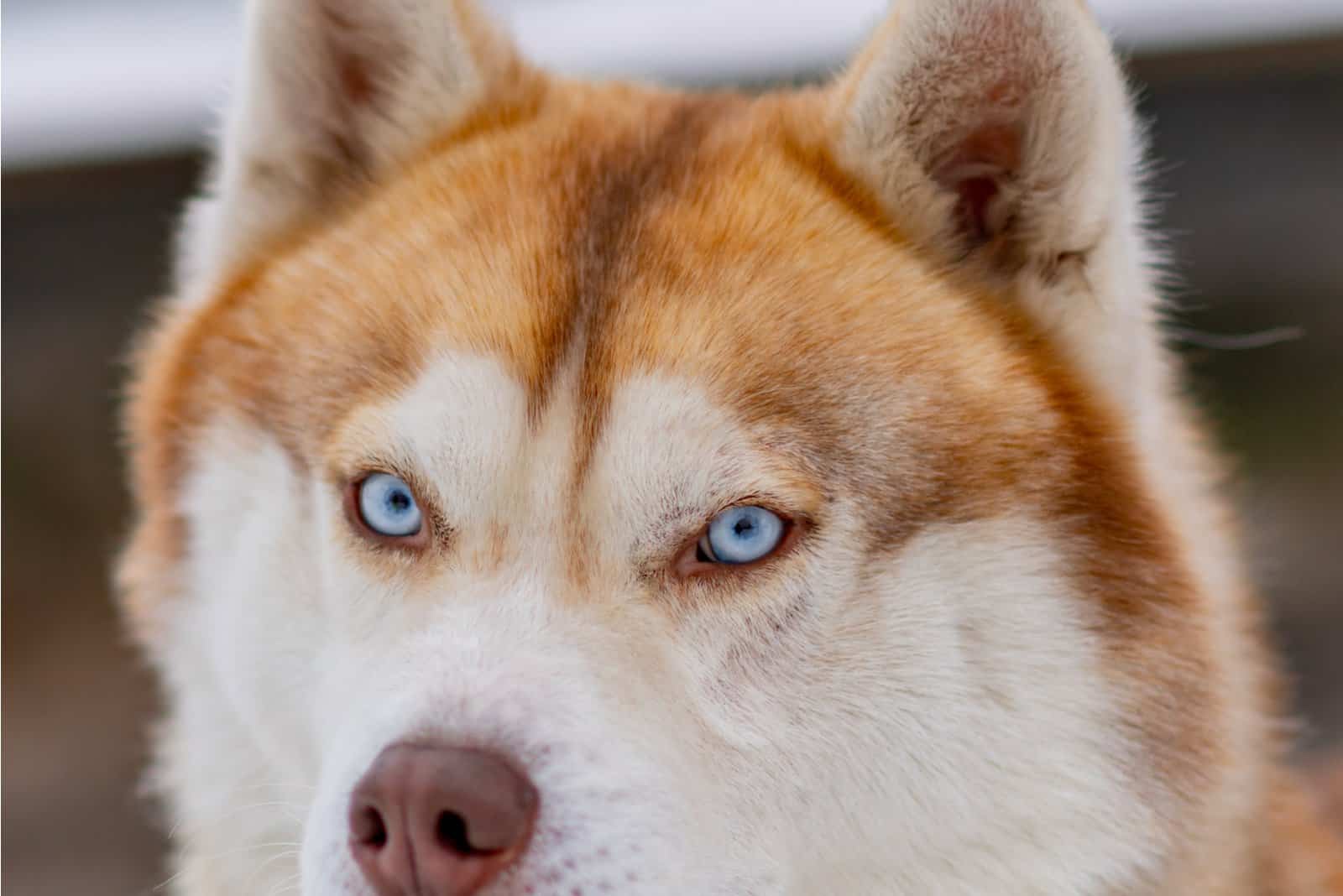
The light orange and white Husky is also referred to as an Isabella Husky. Their cream and white coat color is a work of the dilution of red and brown colors. The end result is this unique coloration.
But, don’t get them confused with pure white coats. You will always recognize an Isabella Husky by a slight tint of light orange or beige in their coat.
Do Brindle Huskies Exist?
Of course, they do!
But, they are very rare. However, you won’t easily see a brindle Husky and know its breed at a first glance. I admit, even I had some trouble telling brindle Huskies apart from other dog breeds. Not coat colors, breeds!
The brindling is a result of a messy gene play that gives dark stripes on light base coats. Think of this as so-called tiger stripes.
Brindle Huskies are better known as tri-color pups as their brindle effect takes shades of black, white, and gray/brown/tan.
What Is The Rarest Husky Eye Color?
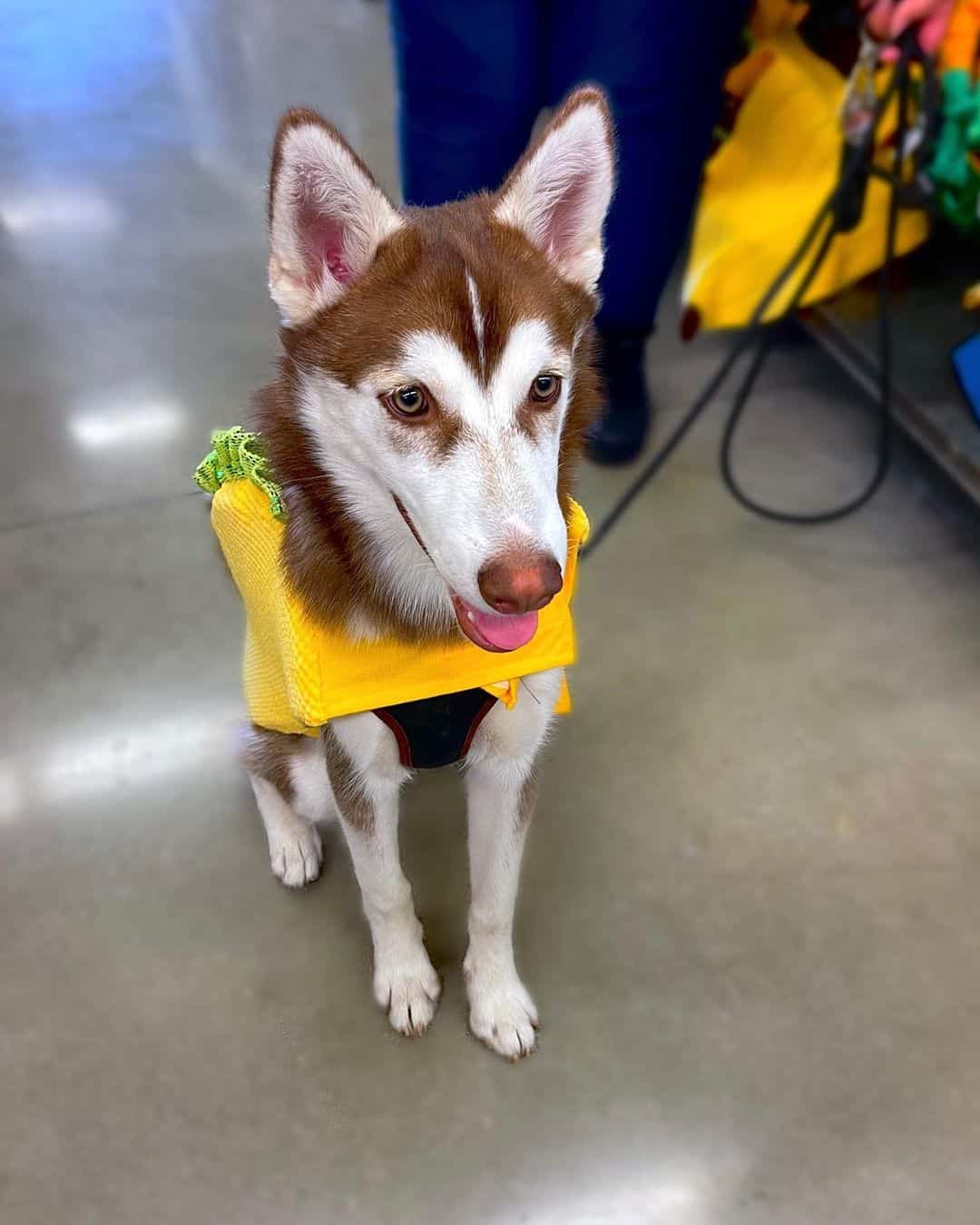
Photo from: @luna_thesibhusky
One thing that makes Huskies a special dog breed, other than their coat, is their eye color.
From icy blues to deep browns, Huskies can fashion almost every eye color. It’s quite difficult to say which is the prettiest one.
But, it’s very easy to tell the rarest of them all!
The rarest of all Husky eye colors is… green! Surprise, surprise… this eye color is even undesirable with the AKC (American Kennel Club), and not considered a part of their breed standard.
See Also: 21 Dogs With Green Eyes You’ll Fall In Love With
Different Colors: Are Their Eyes ill?
There are no red flags here. Nothing to worry about. If your Husky comes as bi-eyed or parti-eyed, you shouldn’t question its pedigree. The reason why Huskies have different colors of their eyes is because they have something known as heterochromia.
But, heterochromia isn’t an illness or a severe condition. It’s only a sign of melanin deficiency; not a sign of your dog being a crossbreed. If a breeder tries to sell you a Husky with one blue and one brown eye, you can trust he’s a purebred.
What’s The Most Popular Of All Husky Coat Colors?
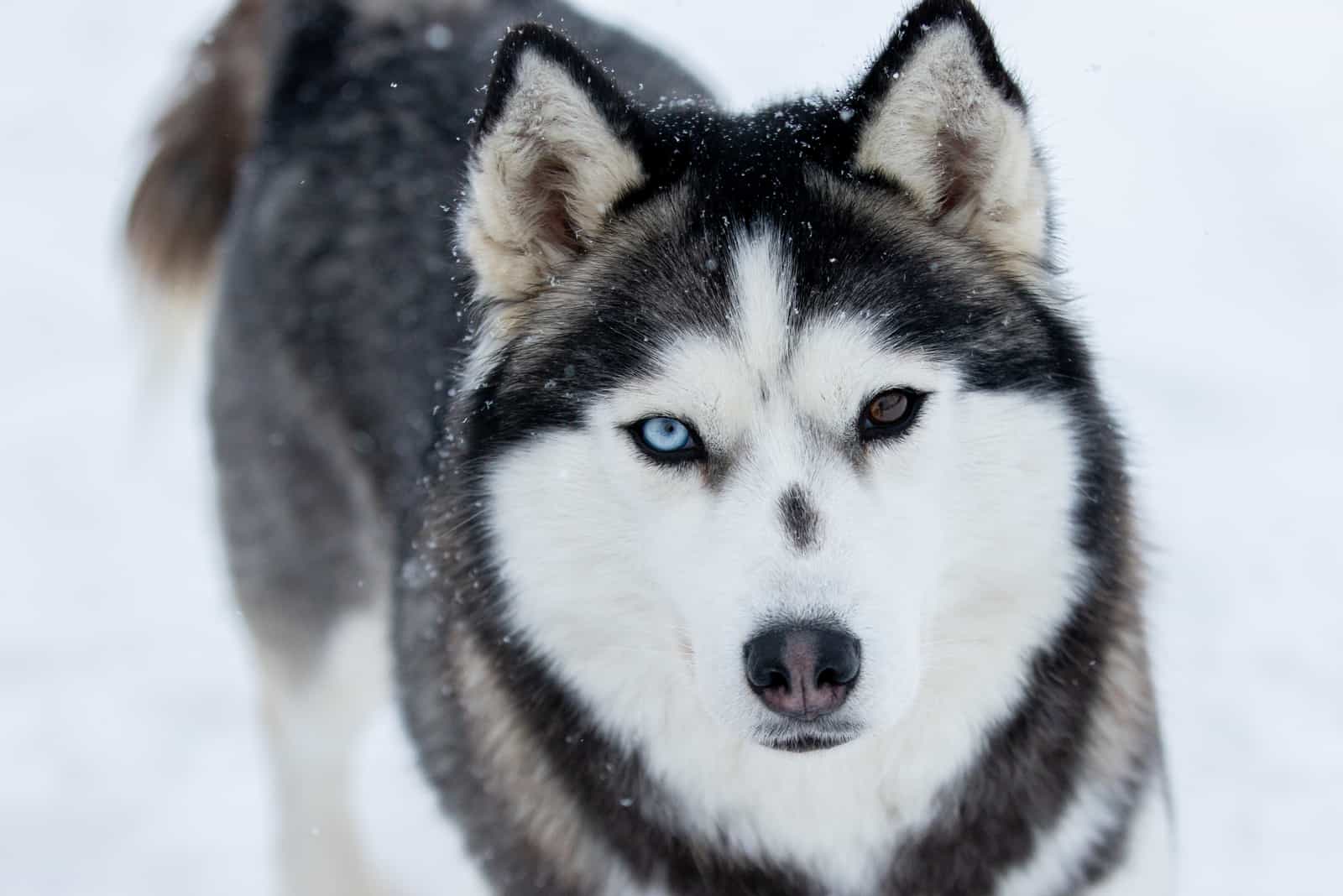
It’s a classic: white and black, or black and white is the #1 coat color of all coat colors in terms of popularity. Coming in second is gray and white Huskies, followed by black color and an all white color.
This may seem far-fetched because pure black and pure white Huskies are rarely found in dog parks, but red and white ones are even rarer.
The Husky coat color game is a tricky one. You don’t have to be an expert to figure it out, but you do need to be involved in the matter.
Grooming Advice For Owning A Husky
As I’ve mentioned earlier, Siberian Huskies shed like crazy. If you want one of them, you will need nerves of steel, a good vacuum cleaner, and even better grooming brushes.
Google “Husky grooming pictures”. You’ll see dog owners managing to sculpt an entire body of their Husky’s old hair! It’s hilarious.
Huskies need to be brushed around three times a week. These dogs have a medium-length coat, which means they will need pin brushes that go deep into the coat. Also, look for high-quality undercoat rakes and combs that will pull out the dead hair without much effort.
When the shedding season kicks in, these grooming tools will be your best friends. Find time for daily grooming; otherwise, you’ll turn into a Husky, too!
Unlike some dog breeds, Huskies don’t have a specific doggy smell. They don’t need bathing that often. Once every couple of months is absolutely fine. We don’t want to dry out their skin and remove those precious natural coat oils!
Besides brushing and bathing, teeth brushing, nail trimming, and overall good hygiene habits are tasks that will make your Husky look good and feel good, too.
Health Issues Linked To Coat Colors And Eyes
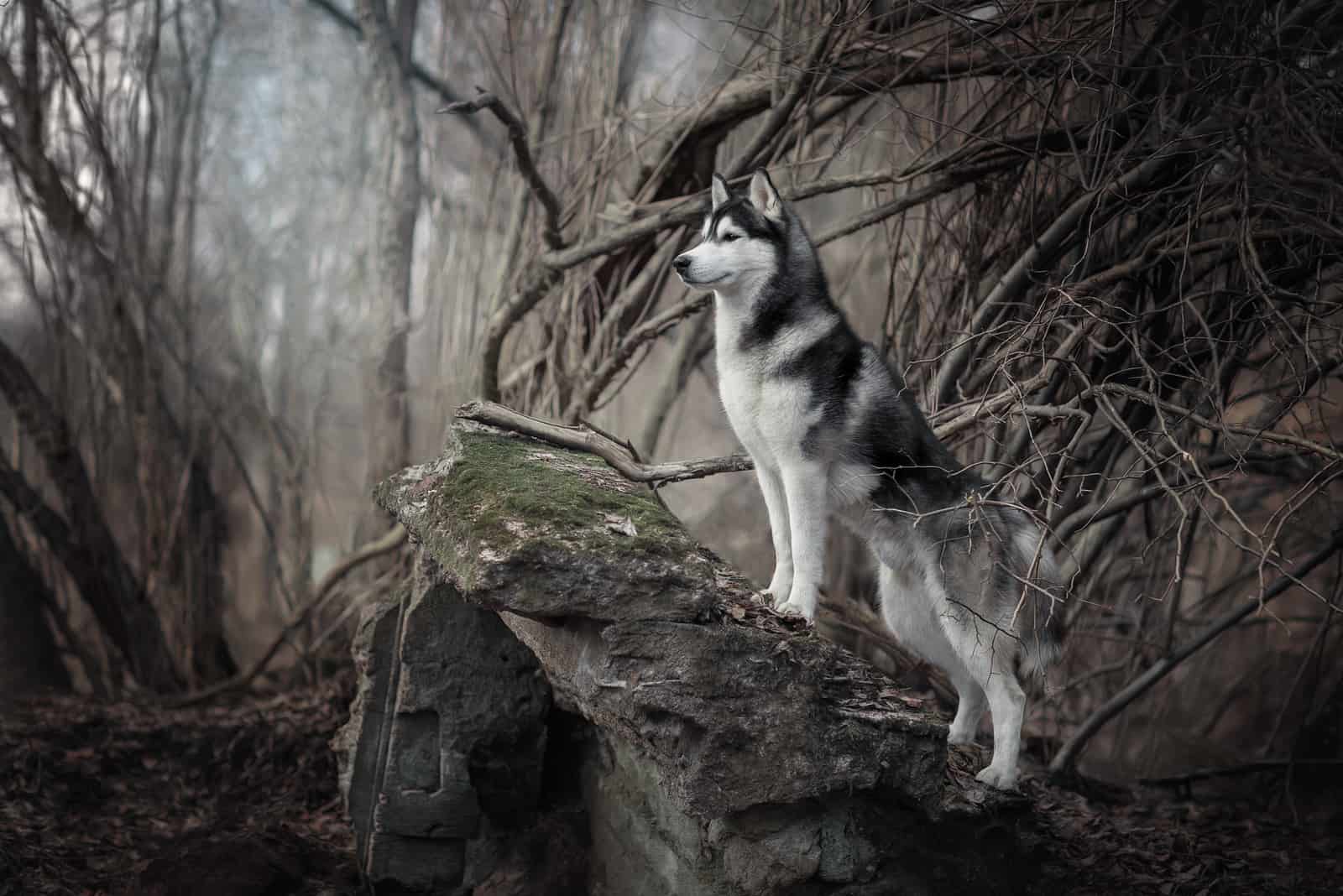
Generally speaking, Huskies are very healthy dogs. But, even they are prone to having some of the most common health problems strike. Luckily, they’re not linked to their coat colors or eye colors.
Yes, merle Huskies are prone to numerous health issues, but that’s only because of their merle gene. We’ve discussed this earlier, and I hope you know what kind of issues merle dogs bring.
For the rest of the Husky breed, the most common health issues may include:
• PRA (Progressive Retinal Atrophy)
• Cataracts
• Hip dysplasia
• Hypothyroidism
• Corneal Dystrophy, etc.
None of the listed diseases are because one dog has a black coat or the other has brown eyes. All Huskies, no matter their size, shape, coat, or eye color can suffer from something on our list.
Can a Husky Change Coat Color?
As with some other breeds, the change of the coat color isn’t a common thing with Huskies. While most puppies get a darker / lighter coat as they grow up, Huskies may or may not keep their color. If a dog has predispositions to change its coat color, he most certainly will at some point in his life.
A Husky’s coat color change can happen on several occasions. Usually, the change happens during their seasonal shedding. Most dead hair will go away, and the dog will grow a new shade, usually a lighter one.
Huskies can also change color if exposed to sunlight. This doesn’t mean you shouldn’t let your dog out when it’s sunny. Exposure for too long can affect the change.
Huskies are dogs coming from snowy parts of the Earth. There is not much sun in these places throughout the year. Even though these dogs have migrated all over the world, sensitivity to sun has still lingered in their genotype.
Lastly, some pups might change color as they grow up. But, this isn’t that often as with other dogs.
Conclusion: Which Of These Husky Colors Should I Pick?
As you can imagine, picking a favorite of all Husky colors is a matter of personal preference. I can’t tell you which color you should go out and look for. Everyone has their own taste. While some prefer red and white Huskies, others will like gray and whites more.
As for me, I’m a fan of all Husky colors, but their standard gray and white is especially dear to me. But, hey… I wouldn’t mind owning any one of them!
What about you? Which of these Husky colors makes you say: That’s my color and that’s my dog?
Read Next: 22 Spectacular Dogs That Look Like Huskies
